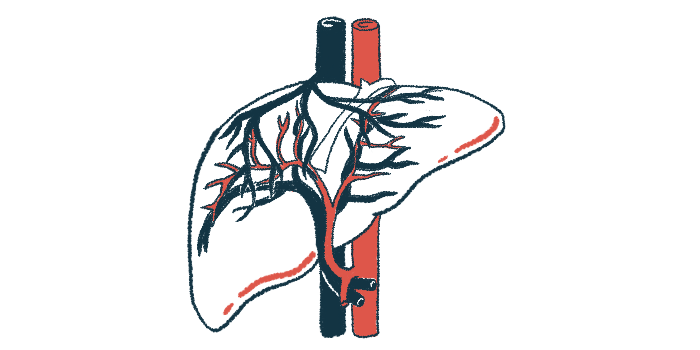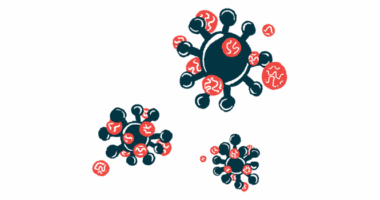New study finds PFIC3 marked by increased inflammation in liver
Scientists ID dysregulated biological pathways that may underlie disease

In a wide-ranging analysis of thousands of different proteins from liver samples from transplant patients, a team of scientists in Spain discovered potential links to the disease mechanisms underlying progressive familial intrahepatic cholestasis type 3, commonly known as PFIC3.
Specifically, the scientists identified nearly 300 proteins that were found at higher or lower levels than normal.
The findings show that PFIC3 is marked by increased inflammation in the liver, as well as alterations in the structural integrity of liver cells and changes in liver metabolism.
“Our results provide a strong molecular background that significantly contributes to a better understanding of PFIC3 and provides new concepts that might prove useful in the clinical management of patients,” the researchers wrote.
Their study, “Molecular basis of progressive familial intrahepatic cholestasis 3. A proteomics study,” was published in BioFactors.
Scientists measure levels of hundreds of proteins in analysis
Progressive familial intrahepatic cholestasis is a group of rare liver diseases in which genetic mutations result in problems in the production and/or secretion of bile by liver cells, known as hepatocytes. Bile is a digestive fluid made in the liver that flows out to the intestines through a series of bile ducts.
Bile’s deficient production/secretion leads to intrahepatic cholestasis — slowed or stalled bile flow in the bile ducts inside the liver — and bile buildup inside the organ, causing damage.
Patients typically experience symptoms in infancy, including itchy skin, a yellowing of the skin and whites of the eyes known as jaundice, dark urine, pale stools, and failure to thrive.
PFIC3 specifically is caused by mutations in the ABCB4 gene, which provides instructions for making a protein called MDR3. That protein is involved in the transport of compounds that neutralize bile salts and prevent damage to bile duct cells.
“Currently, besides the palliative use of [ursodiol], the only available treatment for this disease is liver transplantation, which is really challenging for short-aged [younger] patients,” the researchers wrote.
Although it’s broadly established that MDR3 deficiency leads to cholestasis in PFIC3, the disease’s underlying biological mechanisms are incompletely understood.
As such, “the systematic analysis of the molecular basis of PFIC3 progression might provide useful information to develop new strategies for the better management of PFIC3 patients,” the researchers wrote.
To that end, the team conducted a proteomic analysis — a sweeping assessment simultaneously measuring levels of hundreds of different proteins. They used tissue samples from livers removed from four children with PFIC3 during liver transplant, as well as from the transplanted livers of the four healthy donors.
Each of the patients — three girls and one boy — had different ABCB4 mutations, and the age at disease onset ranged from 12 months to 23 months, or nearly 2 years. Liver transplant occurred at an age ranging from 5 years to 9 years.
Analyses of the ABCB4 mutations’ effects showed that all of them resulted in deficient MDR3 protein levels.
All of them also led to significantly reduced phosphorylation at specific sites of the protein that were “associated to PFIC3 for the first time,” the researchers wrote. Phosphorylation is a type of molecular modification that regulates protein activity.
292 proteins found at different-than-normal levels in PFIC3
Of more than 6,600 proteins assessed in liver samples, the researchers identified 292 that were present at significantly different levels between the PFIC3 patients and healthy liver donors. A total of 166 proteins were found at higher levels in patients, while 126 were at lower levels.
The scientists also identified dozens of proteins with significantly different phosphorylation profiles.
This analysis “provides the identification of differential protein species in PFIC3 livers that might, at least partially, explain the cellular processes triggered in the by the deficiency of MDR3,” the researchers wrote.
Through functional analysis of these proteins, as well as confirmatory studies done in a mouse model, the scientists identified several different major biological processes that appear to be dysregulated in PFIC3.
Among the notable findings, livers from PFIC3 patients seem to have significantly increased inflammation, significantly lower levels of markers of mature hepatocytes, and significantly more cell growth that may be linked to the regenerative process triggered by liver injury.
We report the identification of driver proteins that significantly enhance our understanding of the molecular pathogenesis [development] of this disease and suggest new options for the follow-up and treatment of … patients.
PFIC3 livers also showed changes in metabolic markers consistent with a promotion of tissue injury repair “in contrast to the uncontrolled cell growth that is typically found in cancer development,” the team wrote.
There also were changes in molecular processes that cells use, both to maintain their own shape and to communicate with neighboring cells.
“Regulation of essential cellular processes and structures, such as inflammation, metabolic reprogramming, [shape and cell-to-cell communication], and cell [growth], were identified as the main drivers of the disease,” the researchers wrote.
Though the details remain to be figured out exactly, the researchers noted that many of these changes are likely related to cholestasis — for example, stalled bile is known to trigger inflammation, and changes in cell structure and cell-to-cell communication may contribute to irregular bile flow in the disease.
“We report the identification of driver proteins that significantly enhance our understanding of the molecular pathogenesis [development] of this disease and suggest new options for the follow-up and treatment of … patients,” the team concluded.






